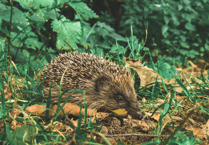The island’s death rate has outstripped its birth rate for five years running.
Paul Craine, the author of the Isle of Man Population Atlas Website, has analysed government figures for 2019.
His work shows that in 2010 the total number of babies born on the island peaked at 1,023.
Last year the number of births registered was just 710, so births have fallen by 30.6% in nine years.
This fall in births will have many effects, some of which will be long-lasting, Mr Craine said.
’One inevitable, and relatively short-term effect, will be a reduction in the size of the primary school population,’ said Mr Craine.
The oldest of the 1,015 pupils born in 2009 are now turning the age of 11 and those still resident in the island will soon be moving on from primary school.
The pupils replacing them will be those born early in 2015 who are now reaching age five - a much smaller group of just 785.
Total primary school numbers could fall by around 200 per year over each of the next five years.
One longer-term effect will be a gap in the current 0-4 years age group as it passes up the population pyramid graph.
’This gap will still be visible in 70 years’ time in much the same way that the post war baby boom is visible today,’ said Mr Craine.
The government wants to attract more economically-active people to the Isle of Man.
As the island’s population ages, fewer people will pay taxes. While that might lead to less pressure on schools, costs for health and social care will rise because there will be more older people.
The fall in the number of births in recent years is not just restricted to the isle of Man.
Births peaked in Scotland in 2008, in Wales and Northern Ireland in 2010 and in England in 2012.
All four of the countries showed decline in the number of births up to 2018.
Data for 2019 data is not yet available.
But none of these countries had a decline anywhere near the Isle of Man’s figure of more than 30%.
Scotland and Wales had declines of about 15% and 13% respectively, while England and Northern Ireland both had declines of around 10%.
Mr Craine said: ’These changes are part of a global picture of decline in the number of children women are having.
More than half of the countries in the world now have fertility rates below the replacement level.’
The replacement level is about 2.1 births per woman.
The number of deaths recorded in the Isle of Man in 2019 was 850, giving a natural population decline (excess of deaths over births) of 140.
This is the fifth consecutive year that the island has experienced more deaths than births.
The Isle of Man’s population would be shrinking except that, according to government estimates, this is compensated by modest migration flows.
The Isle of Man is not the only country to be faced with an ageing population and natural population decline - but its ageing is happening at a faster rate than in most other countries.
In 2018 Mr Craine said the Isle of Man had what the United Nations categorises as a ’hyper-aged’ population, with more than 21% of the population aged over 65.
The island was ranked in the top half dozen countries in the world on this figure.
More than 1,000 people turn 65 each year, while only 750 are born.




.jpeg?width=209&height=140&crop=209:145,smart&quality=75)
Comments
This article has no comments yet. Be the first to leave a comment.